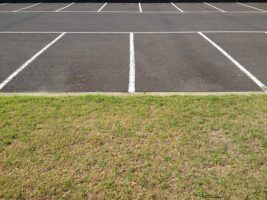

Features
Developing Greener Parking Spaces: The Next Step in Transportation
Parking is a major problem in urban areas, both in terms of space and for environmental reasons. That’s why sustainable city development is dependent on our ability to come up with innovative parking solutions; and while it would be preferable to improve public transit infrastructure, general resistance to public buses and trains continue to make this feasible as a single solution.
In order to reduce the impact of cars on urban environments, it’s important to develop alternative technologies that can minimise the detrimental nature of typical garages and lots. These four solutions are the first steps towards cities where parking doesn’t dominate the landscape, but becomes an active contributor to the surrounding environment.
Shape Shifting
Many cities waste too much space on parking because they’re overly generous when creating spaces – not in the sense that there are too many spaces, but rather because they allot too much width for each spot. While some spots of course need to contain an SUV or other large vehicle, only some of the cars on the road are that large. Designing every spot as though it needs to hold a Hummer is unrealistic and a waste of space.
Instead, cities should provide a distribution of differently sized spaces based on local automotive trends. Programs like Park Assist can also help reduce overbuilding by using a sensor system to track parking occupancy. With this kind of data, garages can revamp their space construction, fitting more vehicles into a smaller area. When we know more about how drivers utilise urban parking, we’re better able to design efficient parking environments.
Room to Refuel
Parking when driving cars fuelled by traditional gasoline will always be associated with pollution and poor air quality, but electric cars have the potential to reduce this type of harm. The biggest problem with getting urban drivers to use electric cars, however, is that many are unsure about how much access to charging facilities they’ll have. With no clear place to plug in their car, urban drivers stick to traditional vehicles.
When parking garages introduce charging facilities, they also create a particular kind of consumer appeal, broadening their audience to a set of drivers who are currently offered few options. And for drivers who haven’t yet adopted an electric car, but have been considering it, this may be just the push they need.
The Car Sharing Revolution
If parking area owners offered more electric car charging locations, they also could potentially be at the forefront of the smart car industry. Self-driving automobiles equipped with sensors are typically electric cars, and they may be the key to greater vehicle sharing down the road as the technology develops. This could reduce the number of cars cluttering cities while not in use. Since cars spend 95% of their time parked, vehicle sharing could cut the number of vehicles needed dramatically.
An Over-Building Epidemic
Ultimately, one of the biggest problems cities face in terms of parking is that private property owners have discovered just how lucrative owning a garage or similar business can be. Parking rates are high and to maximise profits, many garage owners believe they should have a maximum number of spaces on offer, whether that means in a flat lot or a multi-level garage structure. Where there are spots, there’s also a source of revenue.
What many of these property owners don’t realise is that by trying to maximise profits in one sector, they may be increasing them in a less visible way through erosion. Paving in cities increases the rate of storm runoff and causes topsoil and shallow-rooted plants to be pushed out. This can deplete the water table, since the water can’t get back into the ground through the asphalt, and all of the rainwater will need to be managed. Paving with permeable materials is an easy solution to a runaway problem.
Next time you’re in a city, look around for garages and parking lots and try to make an assessment of how populated they are. Do you see a lot of empty spaces or a new garage going up just opposite an already existing one? These are all indicators that the area isn’t being put to good use. When we stop thinking about the lack of street parking in cities and recognise the overabundance of other parking areas, we can start reshaping our expectations about valuable urban land use.


 Environment10 months ago
Environment10 months agoAre Polymer Banknotes: an Eco-Friendly Trend or a Groundswell?

 Environment12 months ago
Environment12 months agoEco-Friendly Home Improvements: Top 7 Upgrades for 2025

 Features9 months ago
Features9 months agoEco-Friendly Cryptocurrencies: Sustainable Investment Choices

 Features10 months ago
Features10 months agoEco-Friendly Crypto Traders Must Find the Right Exchange





























